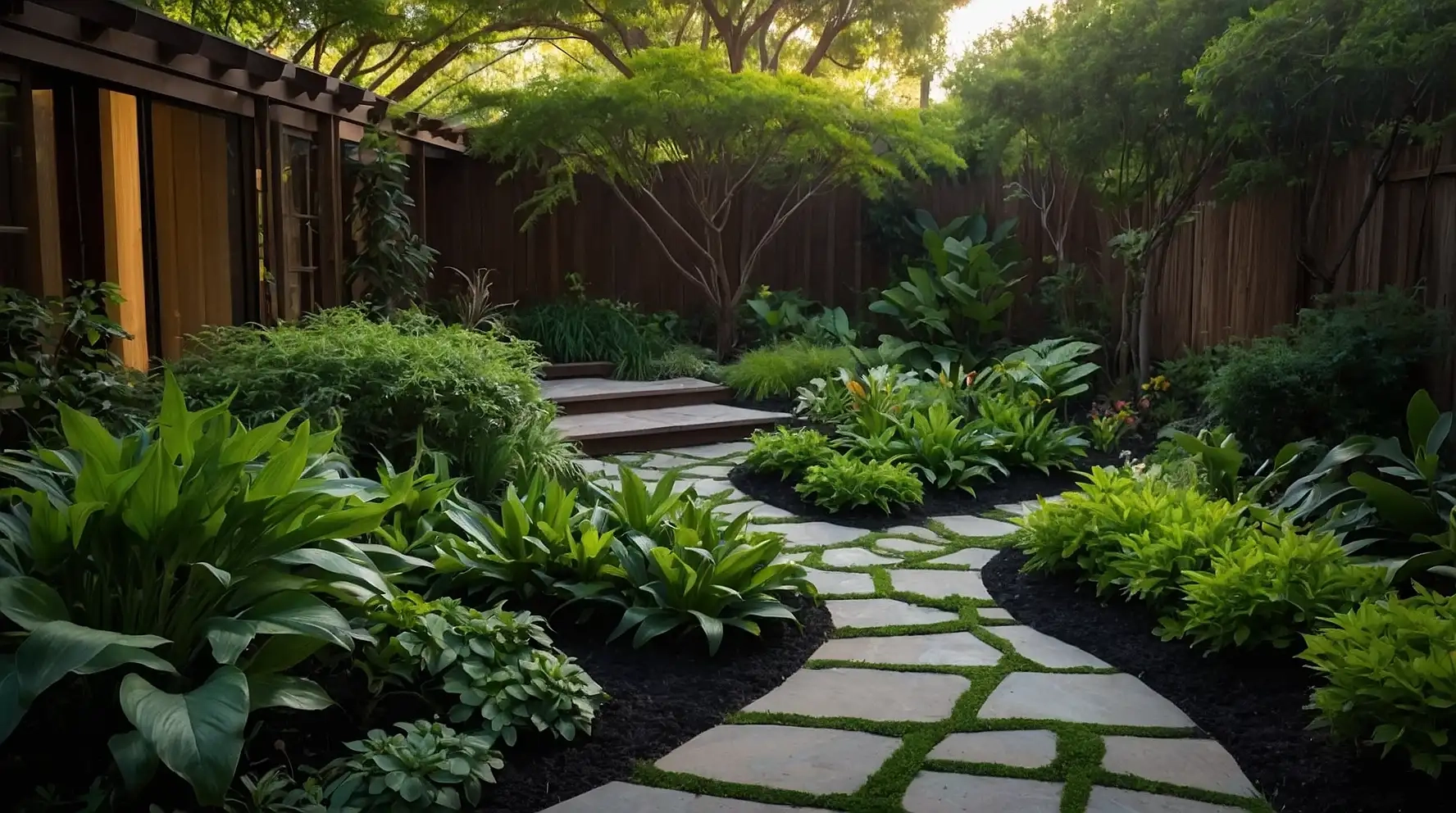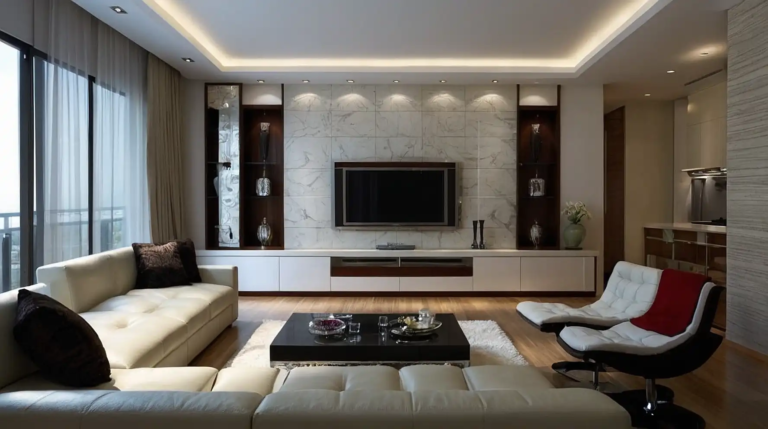17 Stunning Shade Garden Design Layouts That Thrive Without Direct Sun
Does your yard lack sufficient sunlight for a traditional garden?
Don’t worry! Shade gardens offer endless possibilities for creating lush, beautiful outdoor spaces even in the darkest corners of your landscape.
With the right plants and thoughtful design, those challenging shady spots can transform into your garden’s most captivating features.
From woodland retreats to modern minimalist designs, shade gardens bring unique textures and surprising color.
Let’s explore these innovative shade garden layouts that will help you embrace those shadowy areas rather than fighting against them.
1: Woodland Path Garden
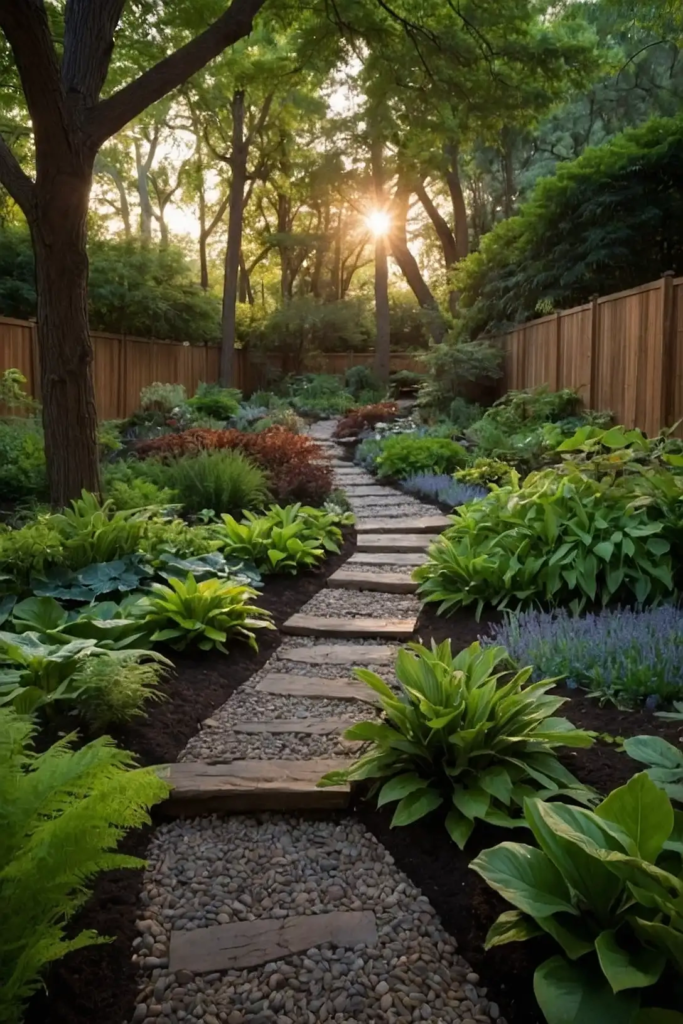
Create a meandering path through your shady area with decomposed granite or mulch. Line the edges with native woodland plants like ferns, hostas, and wild ginger.
This naturalistic approach mimics forest floors, requiring minimal maintenance once established. Position larger shade trees as anchors and understory plants for depth.
Add woodland ephemeral flowers that bloom early spring before the tree canopy fills in for seasonal interest.
2: Tiered Shade Garden
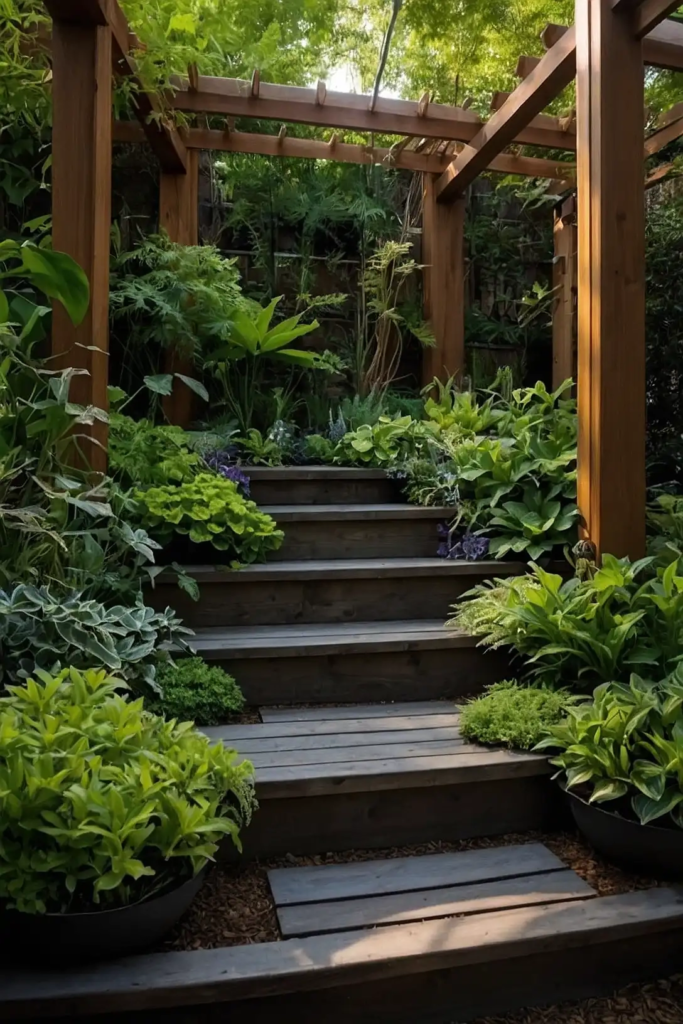
Build stepped or terraced beds that maximize vertical growing space in sloped shady areas.
Place taller plants like hydrangeas and rhododendrons at the back with medium and low-growing plants cascading forward.
The tiered structure creates natural drainage and makes all plants visible from your viewing area. Each level can showcase different plant groups for organized collections.
Use sturdy retaining materials like stone or cedar that develop character as they age in shady conditions.
3: Circular Meditation Garden
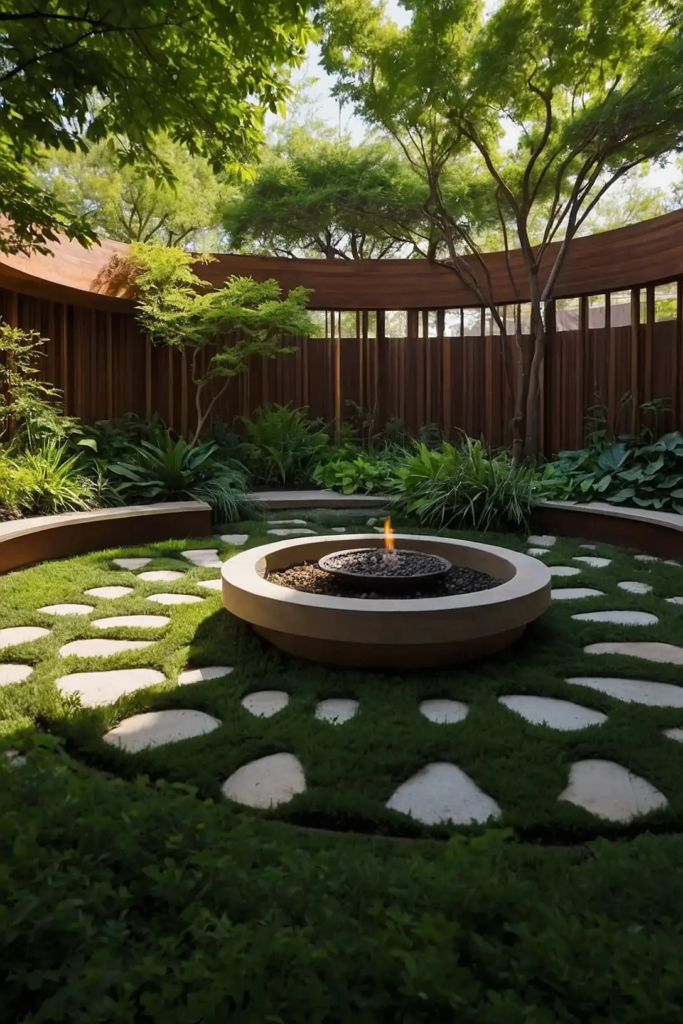
Design a circular layout with a central focal point like a small fountain or sculpture.
Arrange shade-loving plants in concentric rings around this center, creating a mandala effect.
The circular pattern draws the eye inward, creating a peaceful, contemplative space.
Choose plants with various textures like Japanese forest grass, coral bells, and painted ferns.
Add a simple bench or seating area positioned to view the entire composition.
4: Asian-Inspired Moss Garden
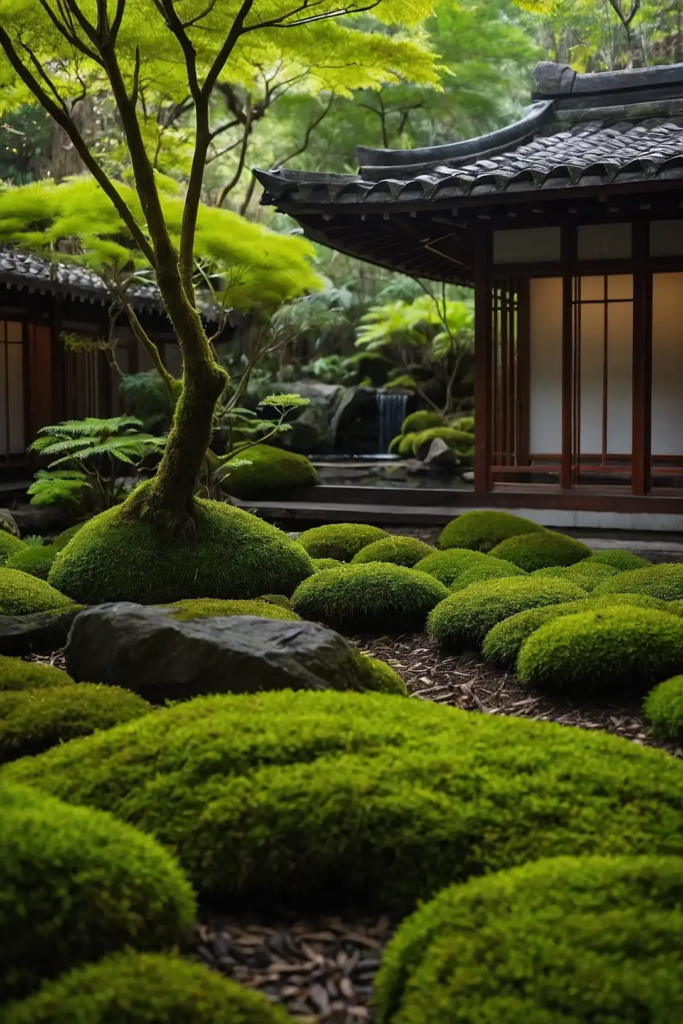
Transform deep shade into a tranquil Japanese-style garden featuring different moss varieties as the primary ground cover.
Incorporate carefully placed rocks, a small water feature, and minimal plantings. This contemplative design thrives in humid, shady conditions where other plants struggle.
The simplicity creates a sense of calm and focuses attention on subtle variations in green.
Add a stone lantern or simple bamboo elements for authentic Asian garden character.
5: Pocket Garden Vignettes
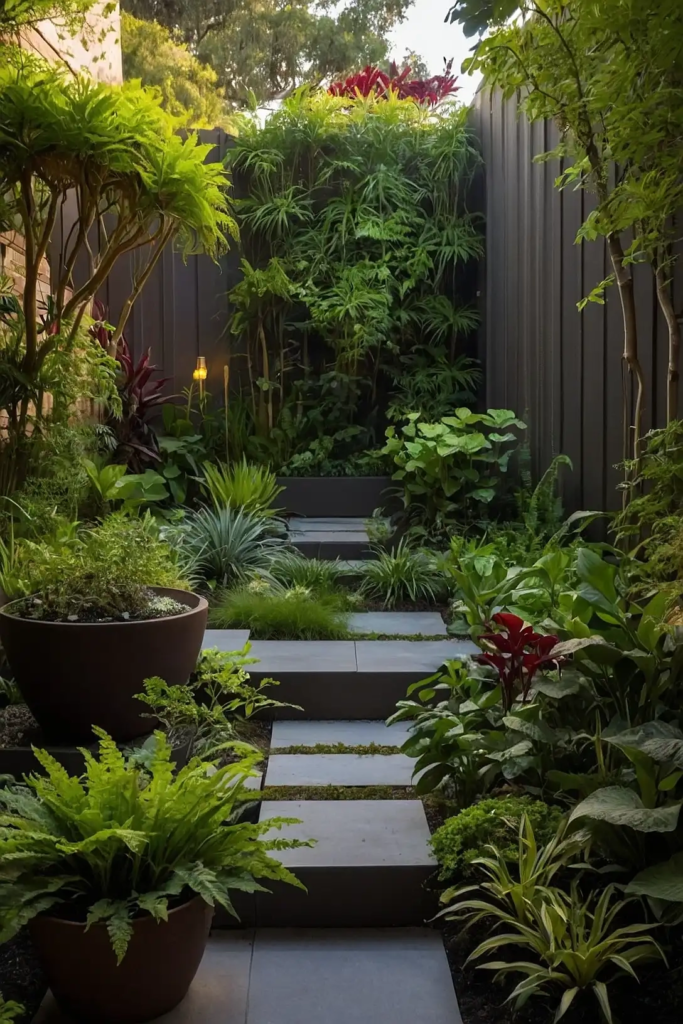
Create a series of small, distinct garden “rooms” connected by simple paths.
Each pocket can highlight different plant combinations or themes adapted to varying shade conditions.
This approach makes maintenance manageable as you can focus on one area at a time.
Design each pocket with its own focal point like a special plant, small sculpture, or unique container.
The separated spaces create journey and discovery as visitors move through your garden.
6: White Garden for Shade
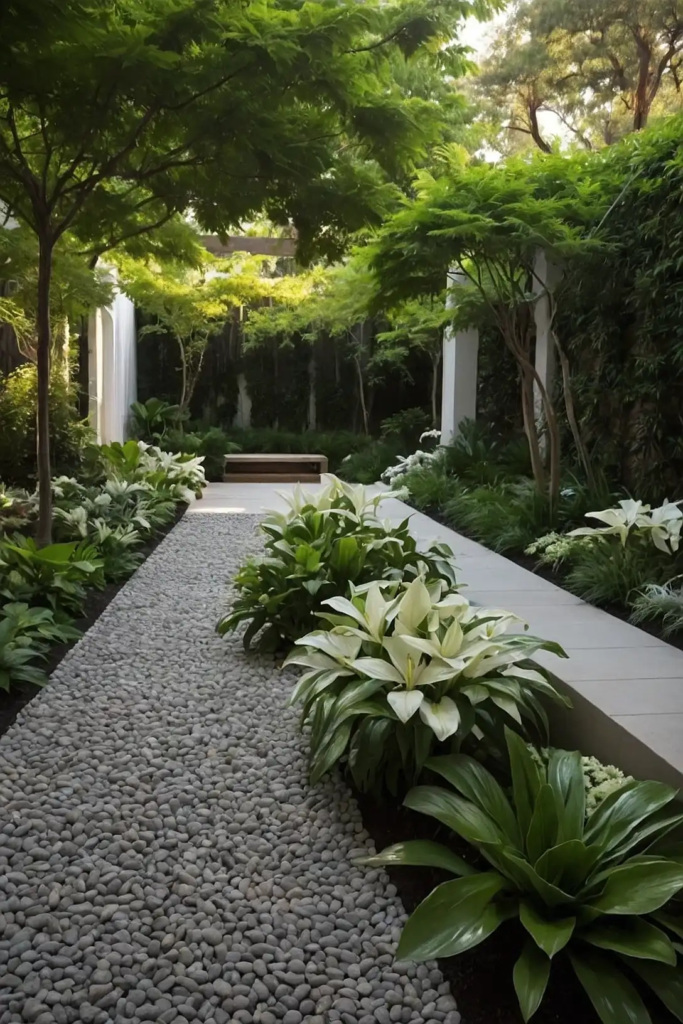
Plant predominantly white and silver-foliaged plants that appear to glow in dim light. Include white-flowering plants like astilbe, bleeding heart, and white coral bells.
This monochromatic approach brightens dark areas and remains visible even at dusk.
Add plants with variegated or silver foliage like Japanese painted fern and burners for daytime interest.
Consider adding small white solar lights to enhance the luminous effect after sunset.
7: Tropical Shade Retreat
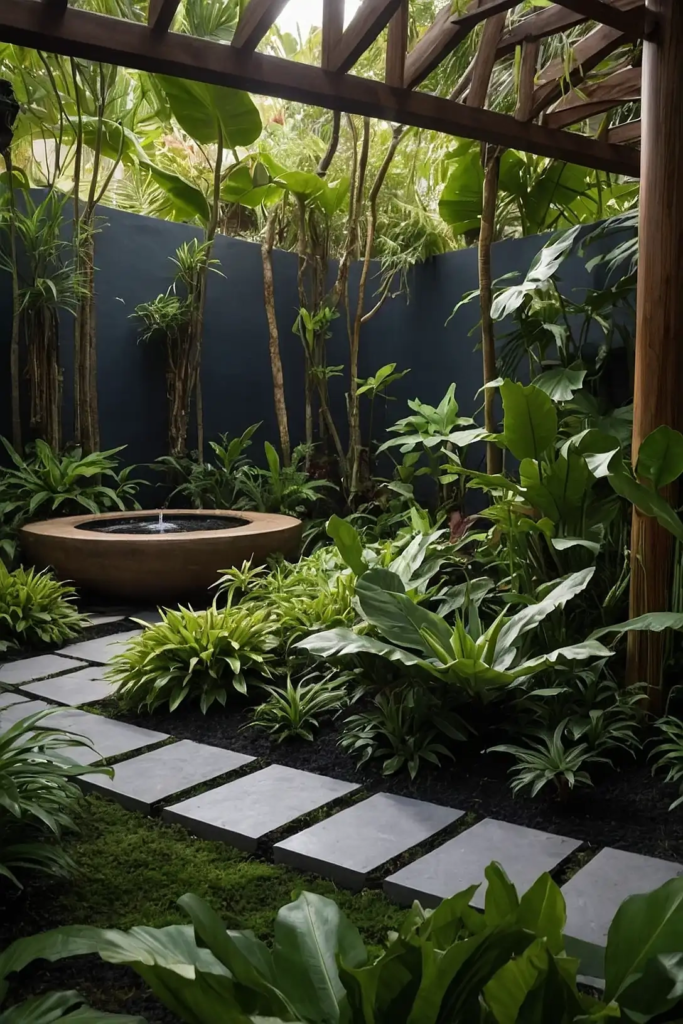
Create a bold, exotic feel with large-leaved plants that thrive in shade. Use elephant ears, fatsia, hardy palms, and ferns to establish a lush tropical atmosphere.
This style works particularly well in hot, humid regions where tropical plants naturally flourish.
Incorporate bright garden accessories like colorful ceramic pots or vibrant outdoor furniture.
Add a water feature to increase humidity and enhance the tropical environment.
8: Shade Container Garden Layout
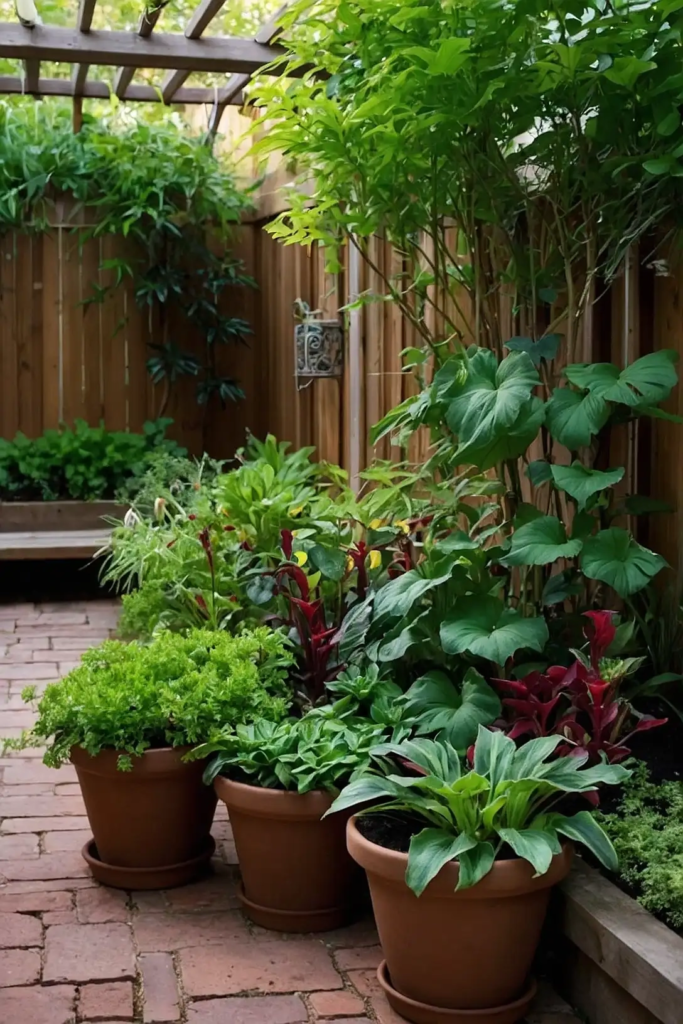
Arrange a collection of containers in various heights and sizes for a flexible shade garden.
Use large pots for specimen plants like Japanese maples or dwarf rhododendrons.
This approach works perfectly for rental properties or areas with poor soil quality. Move containers seasonally to optimize available light or create new arrangements.
Choose containers with similar materials but varying shapes for a cohesive look with interesting variety.
9: Hosta Collector’s Display
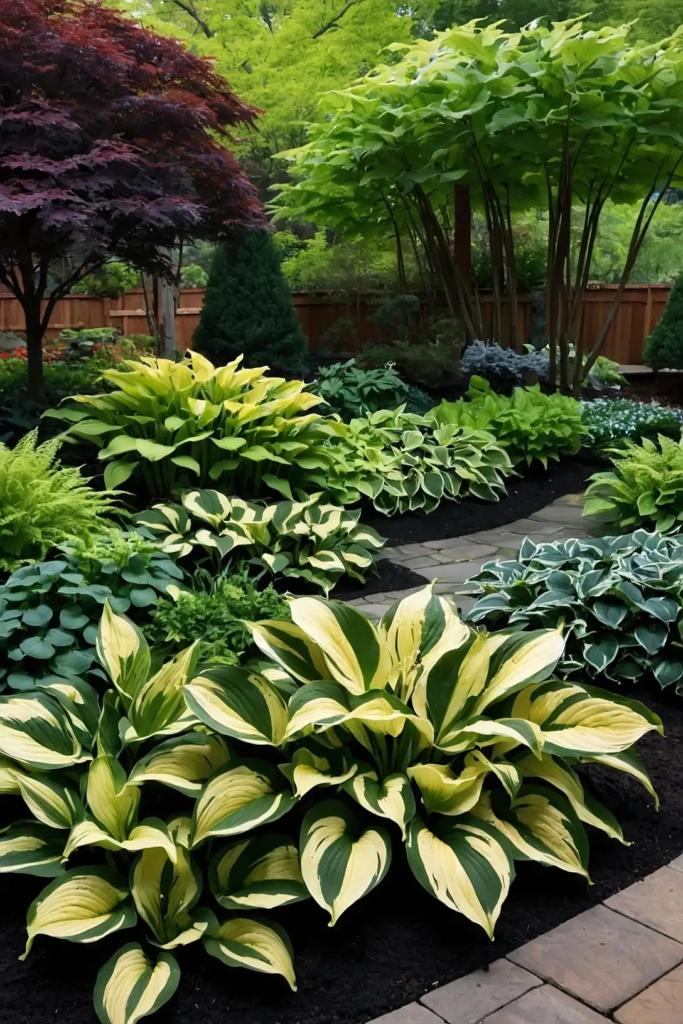
Design beds specifically showcasing the incredible variety of hostas available today. Arrange by size, color, or leaf texture in a layout that highlights their differences.
This collector’s approach creates a living museum of these shade-garden champions.
Incorporate complementary plants like actable, bleeding heart, and heuchera for seasonal blooms.
Add plant labels or a simple map for visitors to appreciate the diversity of your collection.
10: Fernery Landscape
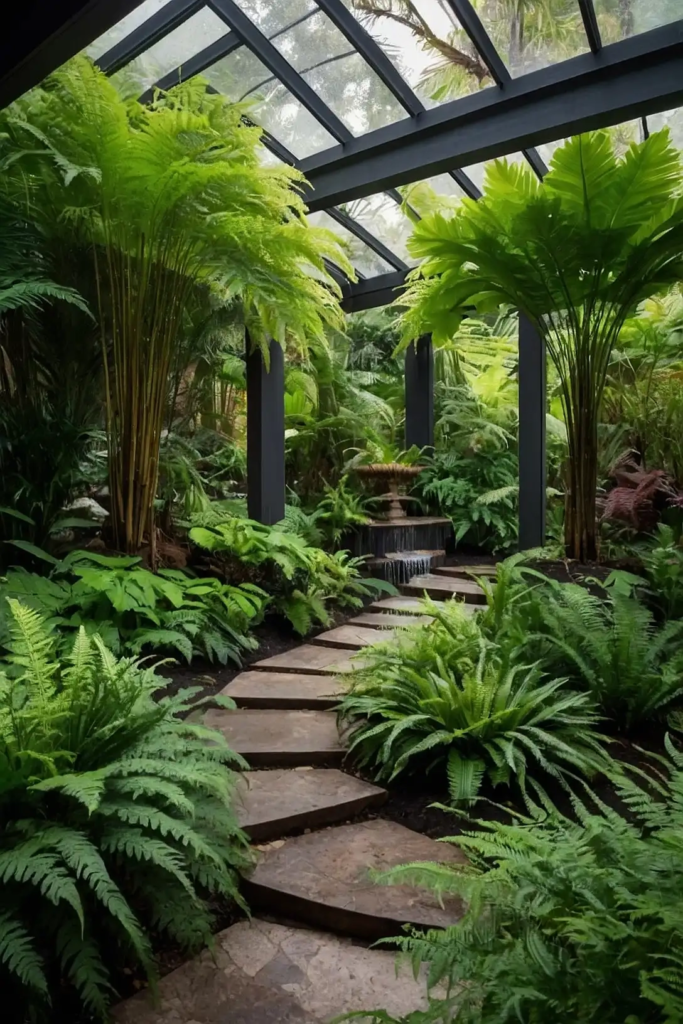
Dedicate your shade area to the ancient beauty of ferns in all their varieties. Mix heights, textures, and growing habits from maidenhair to ostrich ferns.
This prehistoric-inspired landscape creates a lush, cooling environment in hot summer months.
Plant in drifts rather than single specimens for dramatic effect and easier maintenance.
Add large stones or fallen logs as natural accents that also provide habitat for beneficial wildlife.
11: Naturalistic Shade Stream
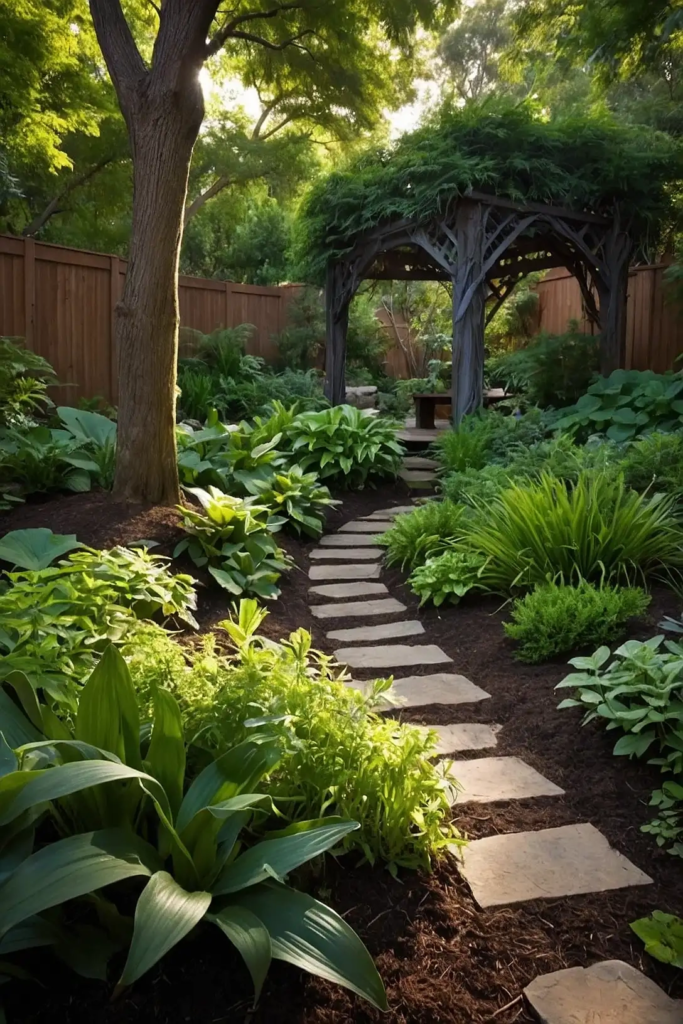
Create a dry stream bed that manages water flow during rain while serving as a design feature. Line with river rocks and plant moisture-loving shade plants along the edges.
This practical design addresses drainage issues common in shady areas. The stream creates a natural dividing line between different garden areas or plant communities.
Consider adding a small recirculating water feature at one end for actual water movement.
12: Formal Shade Parterre
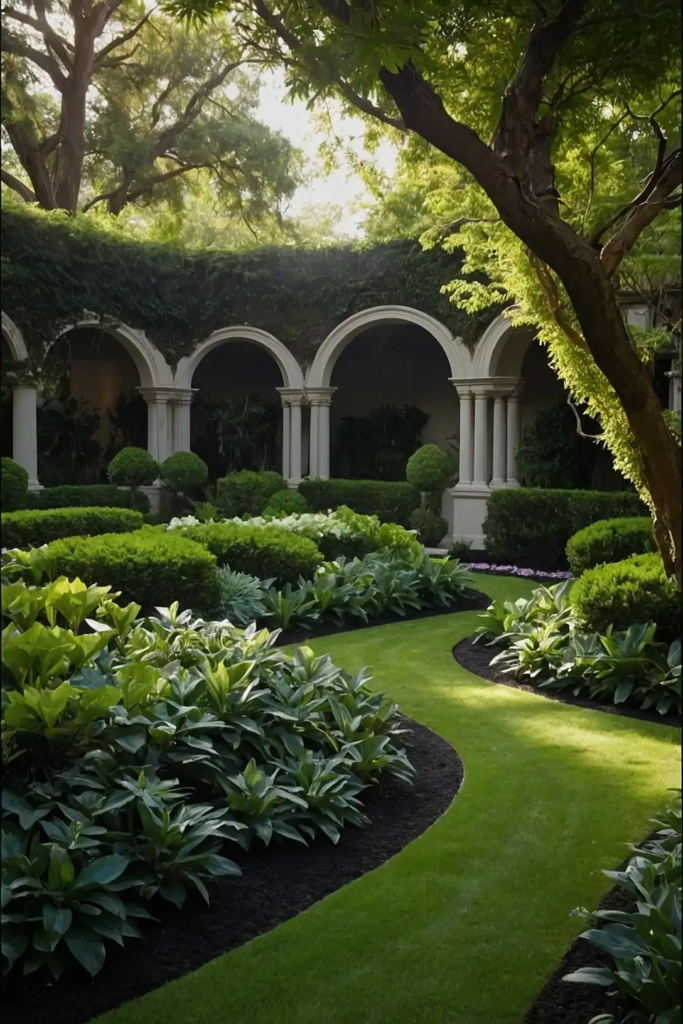
Apply traditional formal garden design principles to your shady area using shade-tolerant boxwood or yew for structure.
Create geometric patterns with clearly defined edges and symmetrical layouts. This unexpected approach brings order and elegance to typically informal shade plantings.
Fill the geometric spaces with shade-loving flowers or decorative mulch for contrast. Add classical elements like a sundial, birdbath, or small statuary as focal points.
13: Vertical Shade Wall
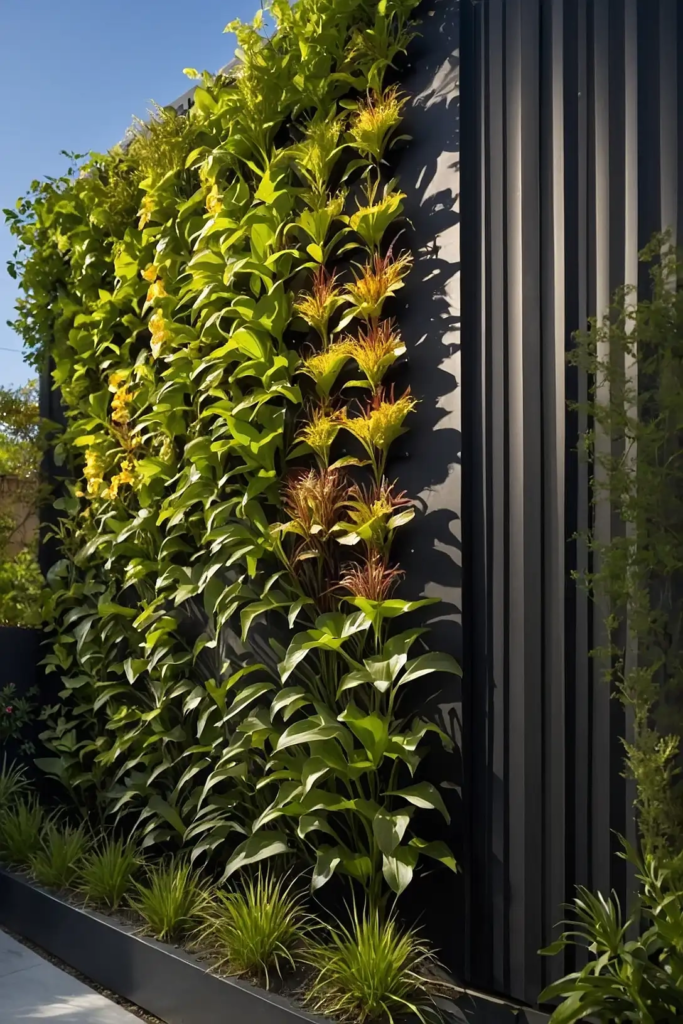
Install a living wall system on a shady fence or building side to maximize growing space. Plant shade-loving ferns, heuchera, tiarella, and small hostas in the vertical pockets.
This space-saving solution adds lush greenery to areas with minimal ground planting space.
The vertical element draws the eye upward, creating perceived spaciousness in tight areas.
Consider a simple irrigation system to maintain consistent moisture in the vertical planting.
14: Edible Shade Garden
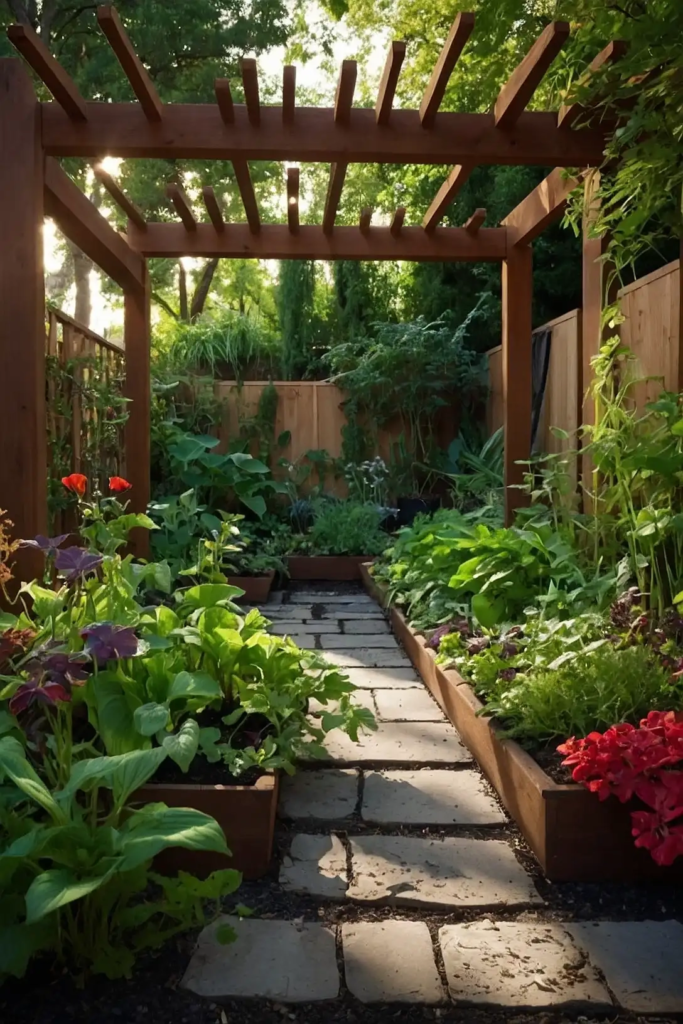
Incorporate shade-tolerant edibles like leafy greens, herbs, and berries into an ornamental layout.
Plant lettuce, arugula, mint, chives, and alpine strawberries among flowering perennials.
This practical approach yields harvests from areas typically considered unsuitable for food production.
Mix edibles with ornamentals for aesthetically pleasing combinations that deter pests. Use attractive containers or raised beds to define growing areas and improve drainage.
15: Miniature Shade Landscape
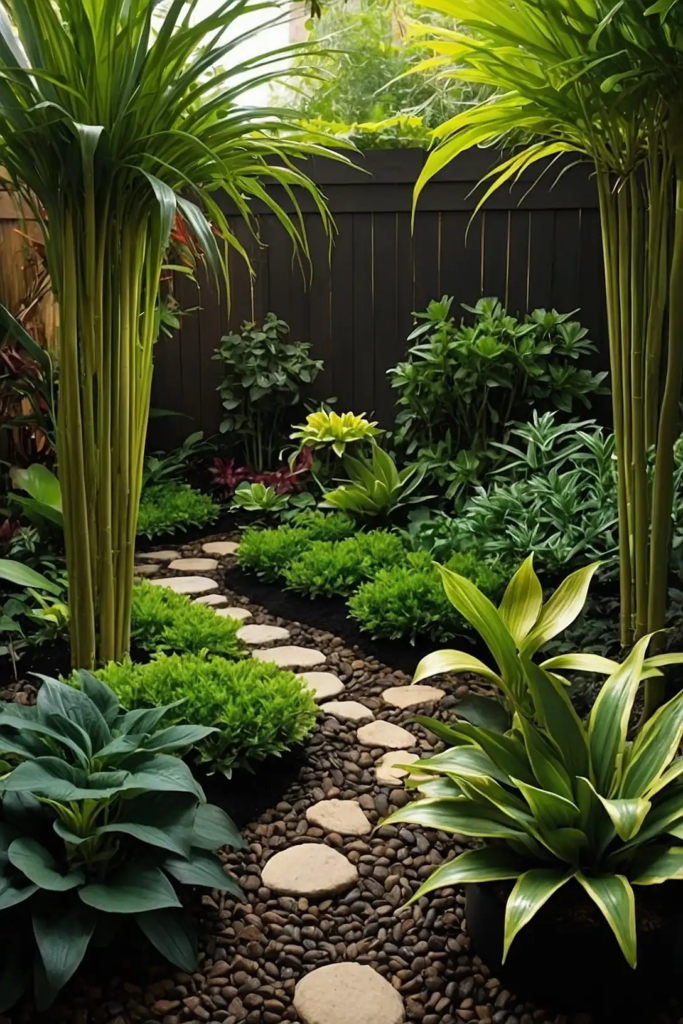
Create a scaled-down landscape complete with tiny paths, mini garden features, and appropriately sized plants.
Use dwarf varieties and naturally small plants like wild ginger and dwarf ferns.
This whimsical approach brings charm to small shady nooks and creates unique visual interest. The miniature scale invites closer inspection and appreciation of tiny details.
Add miniature garden accessories like tiny benches or fairy houses for enchanting touches.
16: Native Woodland Restoration
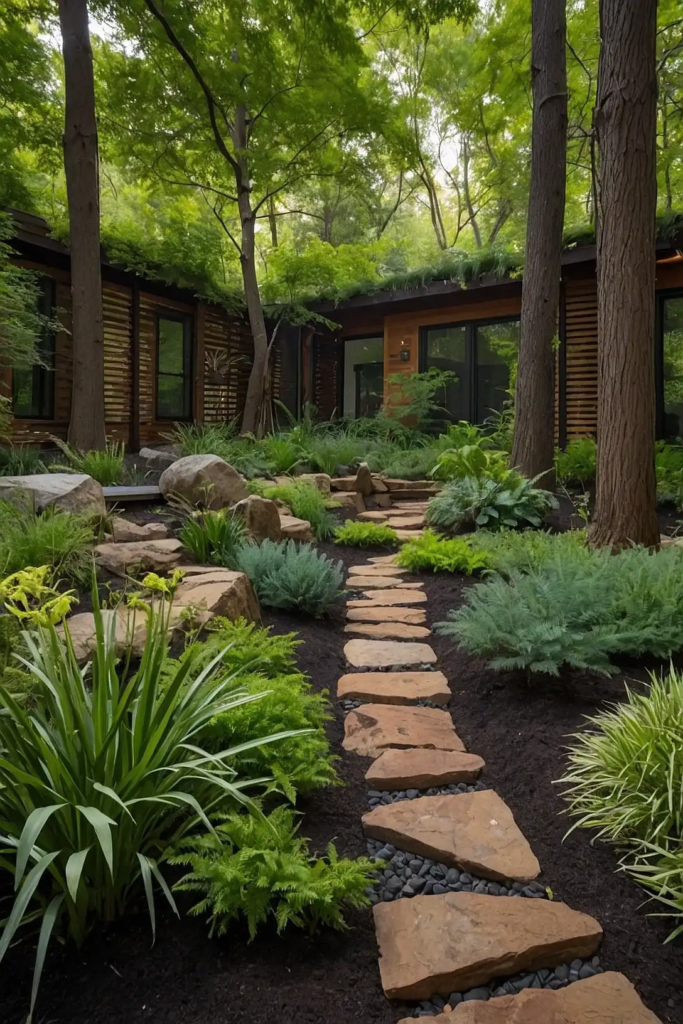
Transform your shady area into an ecosystem supporting local wildlife using native shade plants.
Research plants indigenous to your region’s forest understory for authentic combinations.
This ecological approach supports birds, beneficial insects, and small mammals.
Layer plantings with understory trees, shrubs, perennials, and groundcovers as found in natural woodlands.
Add fallen logs and brush piles in inconspicuous areas to create wildlife habitat.
17: Four-Season Shade Structure
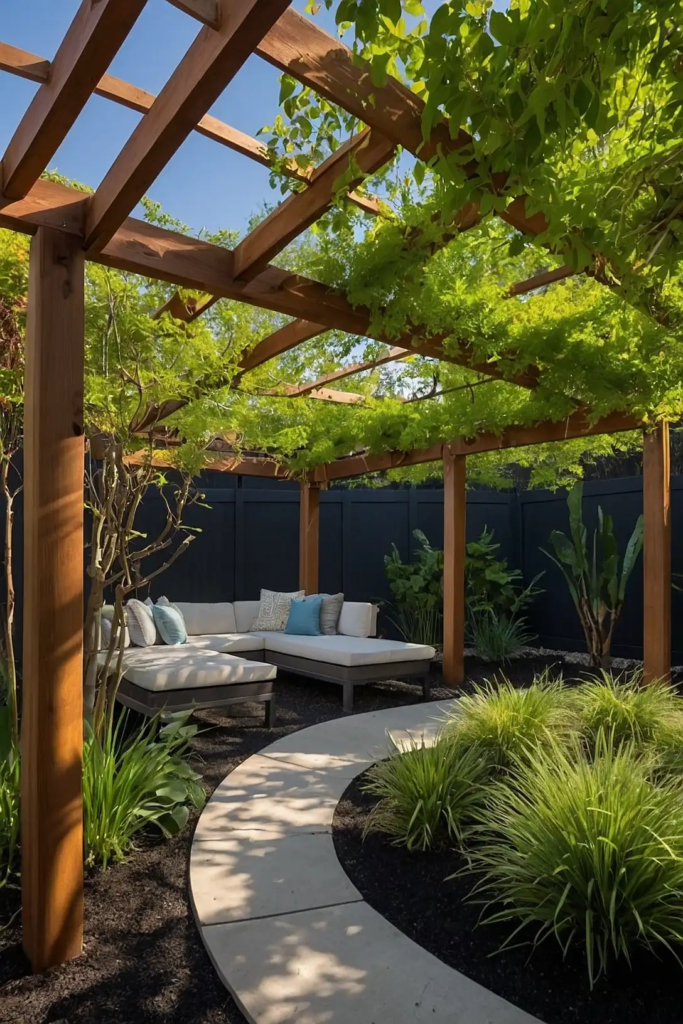
Design your shade garden with deliberate planning for year-round interest. Include early spring bulbs, summer perennials, fall color, and evergreen structure for winter.
This thoughtful approach ensures your shade garden never looks dormant or empty.
Incorporate plants with multiple seasons of interest like heuchera with evergreen foliage and flower spikes.
Add garden art or structures that look attractive in winter when plants are dormant.
Conclusion
With these inspiring design ideas, your shady spots can become your garden’s most cherished features.
Start small, observe how plants perform, and gradually expand your shade garden as your confidence grows.

